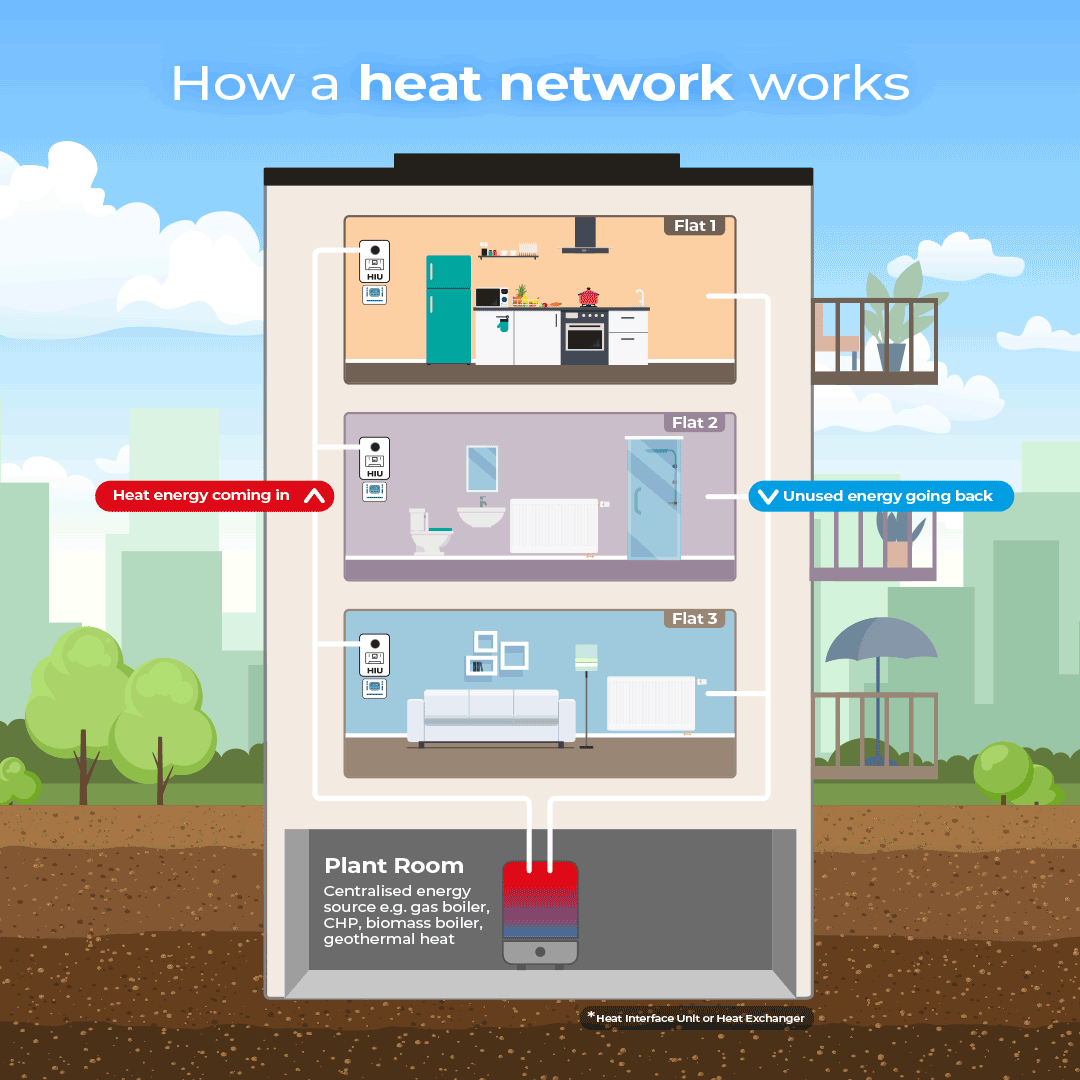Development landlord
- They may also be referred to as the heat supplier.
- Owns the property’s ground lease.
- Where no managing agent or ESCo Manager is in place, they are the heat supplier responsible for:
- Reliable heating & hot water supply;
- Managing incoming fuel contract;
- Setting fair & accurate heat tariffs recovering the operational costs of the heat network;
- Issuing bills and payment collection from residents;
- Servicing and repairs of heat network assets, and;
- Recovering heat network asset maintenance costs via daily standing charges or service charges.
Contact for: general heat supply issues, heat tariff requests, and network asset maintenance (if no managing agent or ESCo Manager is in place).
|
Managing agent
- Sets building's service charges.
- Manages building assets (e.g. lifts) servicing and repairs.
- Where no ESCo Manager is in place, they are the heat supplier responsible for:
- Reliable heating & hot water supply;
- Managing incoming fuel contract;
- Setting fair & accurate heat tariffs recovering the operational costs of the heat network;
- Issuing bills and payment collection from residents;
- Servicing and repairs of heat network assets, and;
- Recovering heat network asset maintenance costs via daily standing charges or service charges.
Contact for: general heat supply issues, heat tariff requests, and network asset maintenance (if no ESCo Manager is in place).
|
ESCo Manager
This may be Insite Energy for your development.
- Where appointed, they are the heat supplier responsible for:
- Reliable heating & hot water supply;
- Managing incoming fuel contract;
- Setting fair & accurate heat tariffs recovering the operational costs of the heat network;
- Issuing bills and payment collection from residents;
- Servicing and repairs of heat network assets, and;
- Recovering heat network asset maintenance costs via daily standing charges or service charges.
Contact for: general heat supply issues, heat tariff requests, and network asset maintenance.
|
Metering & billing provider
This may be Insite Energy for your development.
- Where appointed by the heat supplier, they are responsible for:
- Collecting your meter reads and charging you based on actual consumption either through monthly credit bills or a pay-as-you-go (PAYG) system;
- Offering you a range of payment methods and processing your payments and top-ups;
- Providing customer support about bills and payment issues;
- Processing move ins to set you up on our billing system, and move outs to issue accurate final bills;
- Supplying welcome e-brochures and emails to all new residents;
- Issuing annual statements, and;
- Providing the heat supplier advice on setting fair & accurate heat tariffs recovering only the operational costs of the heat network.
Contact for: Payment issues, billing issues, consumption report requests, and customer portal account issues.
|

































